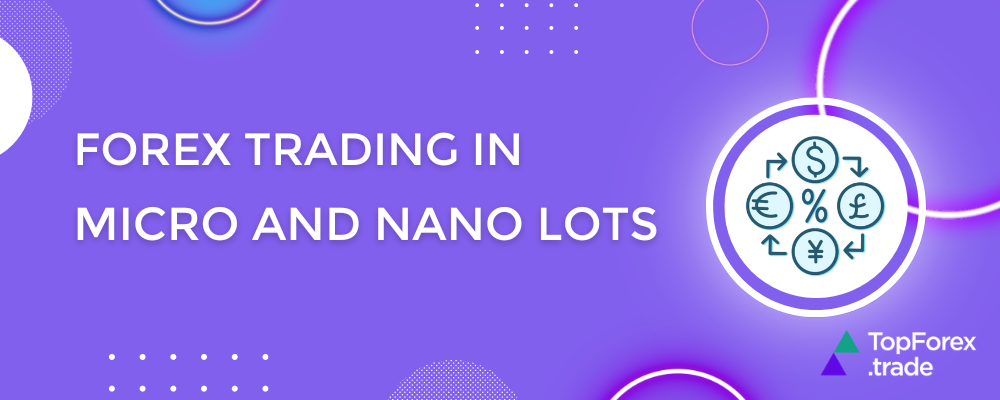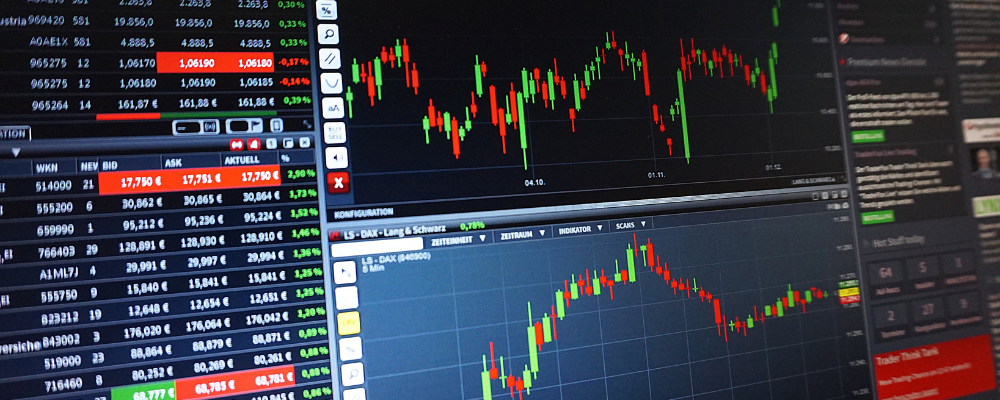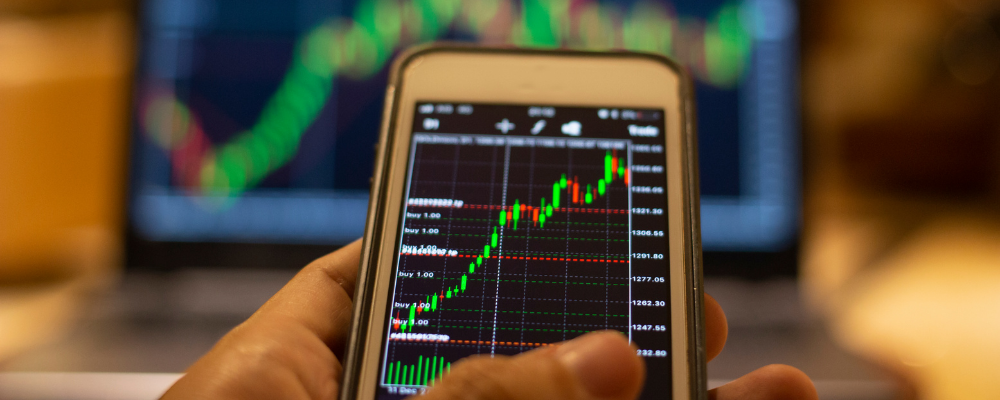Micro and nano lots in Forex: a beginner’s guide to risk-free trading

For new Forex traders or those with smaller capital, trading micro and nano lots offers a more accessible way to enter the market with reduced risk. Micro and nano lot trading allows you to trade smaller amounts of currency, minimizing potential losses while giving you room to learn and test strategies. This guide will introduce you to the essentials of nano lot trading, explain how it works, and provide insights into the benefits, challenges, and how to get started with the right broker.
What are micro and nano accounts in Forex?
Micro and nano accounts are specialized types of trading accounts in the Forex market that enable traders to trade significantly smaller lot sizes compared to standard accounts. These accounts are particularly useful for beginners, those with limited capital, or traders looking to minimize risk by trading smaller positions.
- Micro lot: A micro lot is the equivalent of 1,000 units of the base currency (0.01 lot). For example, if you’re trading EUR/USD, a micro lot would represent 1,000 euros. Compared to standard lots (100,000 units of the base currency), micro lots allow for much smaller trades, meaning each pip movement has a lower impact on your account balance.
- Nano lot: A nano lot, the smallest lot size available, equals 100 units of the base currency (0.001 lot). If you were trading EUR/USD, a nano lot would represent just 100 euros. This allows traders to make even smaller trades, offering maximum control over risk and exposure.
How do micro and nano accounts differ from standard accounts?

The key difference between micro/nano accounts and standard accounts is the lot size. In a standard Forex account, one standard lot is 100,000 units of the base currency, making it a higher-stakes trading option. By contrast, micro and nano accounts significantly reduce the lot size, making it easier for traders with limited funds to participate. Additionally, with micro and nano accounts, traders can better manage risk, as each pip movement represents a smaller monetary value than standard lots.
In a standard account, even minor price fluctuations can lead to substantial profits or losses due to the larger lot size. In micro and nano accounts, the financial impact of price changes is significantly smaller, making these accounts ideal for those who wish to build their skills without exposing themselves to large risks.
Leverage options in micro and nano accounts
Leverage in Forex allows traders to control larger positions with less capital. Depending on the broker, micro and nano accounts typically offer similar or even higher leverage options than standard accounts. For example, a broker might offer leverage of 1:100 or 1:500 on a micro account, meaning that a trader can control a $100,000 position with as little as $200 or $100 in capital.
However, leverage is a double-edged sword—it can magnify profits, but it can also amplify losses. Therefore, while leverage gives traders more control over larger trades, it requires careful risk management, especially in micro and nano accounts where the capital is typically smaller.
Read more: Forex trading with leverage and margin explained: how to manage risks and not to lose money
How Forex nano and micro accounts work (with examples)

In a nano account, trading 1 nano lot means controlling 100 units of the base currency. For example, if you’re trading the EUR/USD currency pair at an exchange rate of 1.2000, a single nano lot trade would control $120 worth of EUR. If the EUR/USD pair moves by 10 pips (0.0010), this change will result in a movement of just $0.10 in your account, allowing you to absorb small fluctuations without high risk.
In a micro account, where one micro lot equals 1,000 units, trading EUR/USD at the same exchange rate would mean controlling $1,200 worth of EUR. A 10-pip movement in this case would lead to a change of $1. This level of exposure still allows for risk management but offers a slightly higher stake in the market.
Advantages of FX micro and nano lots
- Designed for beginners and traders with smaller capital
These accounts are ideal for those just starting in the Forex market. Standard accounts often require a substantial amount of capital, and each trade can expose a trader to higher levels of risk due to the large lot sizes. Micro and nano accounts, on the other hand, significantly reduce the financial exposure of each trade. This makes it easier for new traders to learn, experiment with strategies, and gain confidence in their trading skills without the fear of major losses.
- Lower entry barrier
The lower entry barrier is a key feature of micro and nano accounts. Traders don’t need to deposit large sums to begin trading, as the smaller lot sizes require less margin. For example, a broker might allow you to open a micro account with as little as $10 or $100, depending on the platform. This enables more people to participate in the Forex market who may not have the resources for larger accounts.
- Better risk control and strategy testing
One of the main advantages of trading with micro and nano accounts is the ability to control your risk more effectively. Smaller trades allow you to allocate just a small percentage of your capital to each position, which is a crucial component of sound risk management. For instance, if you have a $500 account and trade with a standard lot size, a 10-pip move could cause a significant change in your balance. In contrast, with a micro or nano account, a 10-pip move would result in a much smaller impact, giving you the flexibility to withstand market fluctuations.
Moreover, these accounts are perfect for testing and refining trading strategies. Whether you’re experimenting with new technical analysis techniques, trying out automated trading systems, or adjusting your risk-to-reward ratios, micro and nano accounts allow you to do so with minimal financial risk.
Top FX brokers with micro and nano accounts
Pro tip: Before choosing a Forex broker, check Forex brokers with the best reputation among real traders.
Several reputable Forex brokers offer micro and nano accounts tailored for beginners and traders with smaller capital:
HF Markets micro and nano lots trading
HF Markets: Known for its flexibility and range of account types, HF Markets offers micro accounts with a minimum lot size of 0.01 and provides high leverage and low starting deposits, perfect for beginners.
Exness micro and nano lots trading
Exness: This broker offers both nano and micro accounts, with a minimum lot size of 0.01 and low spreads. Exness also provides high-leverage options, making it accessible for traders with smaller capital.
AvaTrade micro and nano lots trading
AvaTrade: AvaTrade offers micro accounts with a minimum lot size of 0.01 across its trading platforms, including MetaTrader 4 and 5. This makes it an ideal broker for testing various trading strategies.
BlackBull Markets micro and nano lots trading
BlackBull Markets: BlackBull Markets also offers micro accounts with a minimum lot size of 0.01, featuring fast execution and deep liquidity. This makes it a great choice for traders focused on high-frequency or automated trading strategies.
eToro micro and nano lots trading
eToro: While eToro primarily focuses on social trading, it offers micro-lot trading with a minimum lot size of 0.01. eToro also provides excellent educational resources, making it ideal for beginners.
Risk disclaimer: eToro is a multi-asset platform which offers both investing in stocks and cryptoassets, as well as trading CFDs.
CFDs are complex instruments and come with a high risk of losing money rapidly due to leverage. 51% of retail investor accounts lose money when trading CFDs with this provider. You should consider whether you understand how CFDs work, and whether you can afford to take the high risk of losing your money.
This communication is intended for information and educational purposes only and should not be considered investment advice or investment recommendation. Past performance is not an indication of future results.
Copy Trading does not amount to investment advice. The value of your investments may go up or down. Your capital is at risk.
Don’t invest unless you’re prepared to lose all the money you invest. This is a high-risk investment and you should not expect to be protected if something goes wrong. Take 2 mins to learn more.
eToro USA LLC does not offer CFDs and makes no representation and assumes no liability as to the accuracy or completeness of the content of this publication, which has been prepared by our partner utilizing publicly available non-entity specific information about eToro.
Related articles:
Forex nano and micro lots - FAQ